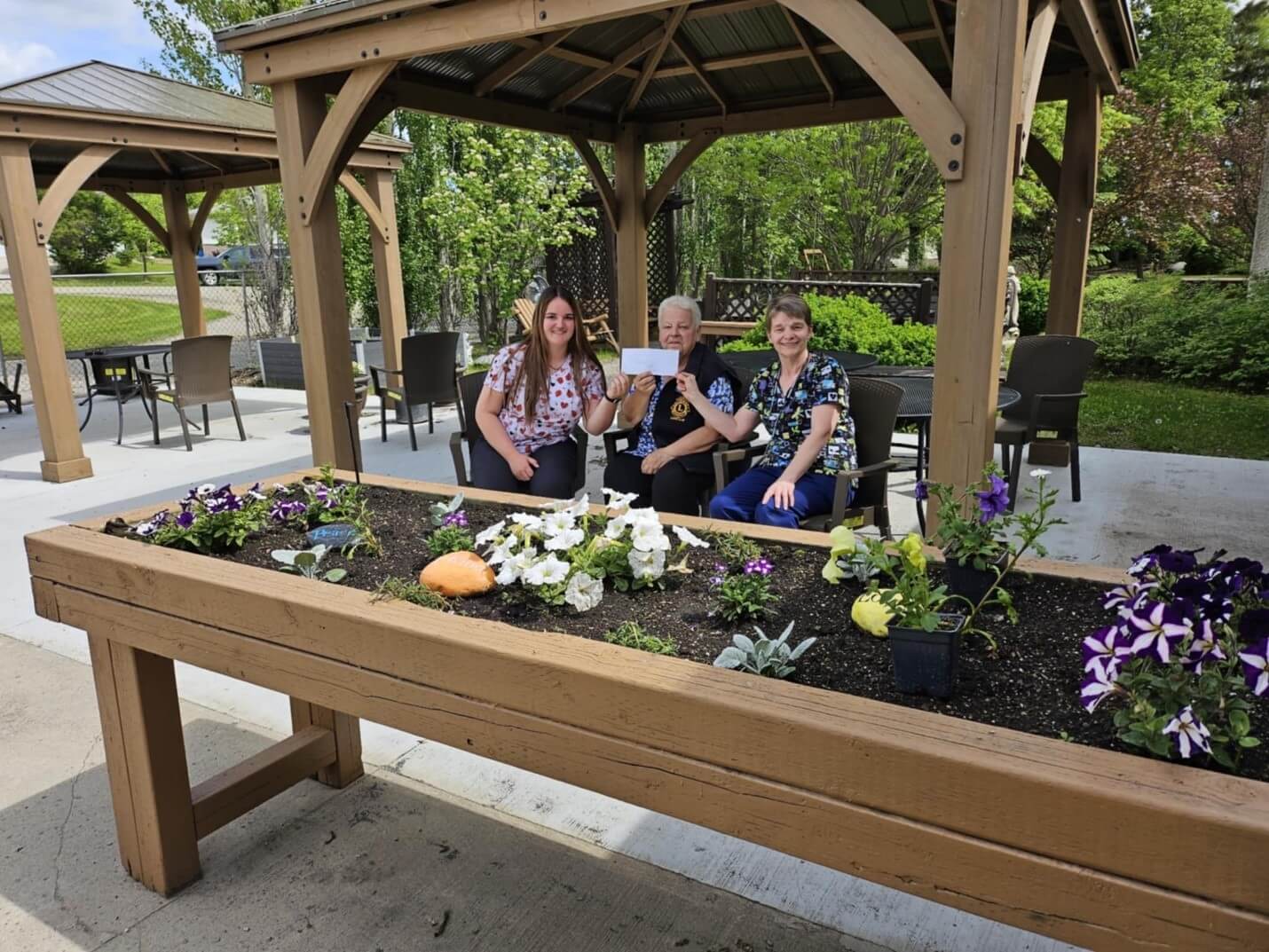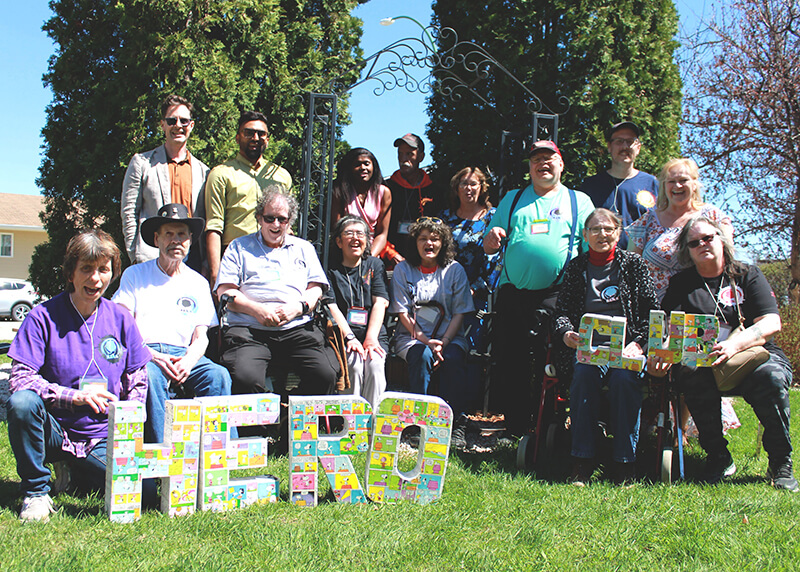June 2024 Donations for PMH
New Centralized Cardiac Monitoring System for the Souris Health Centre

Pat Bauldic , Auxiliary Member with the new Centralized Cardiac Monitoring system.
The Souris Health Center is grateful to receive new equipment purchased with funds raised by the Souris Health Auxiliary Committee.
The new Centralized Cardiac Monitoring System was installed last month at the Souris hospital. Souris Manager of Health Services for Acute Care, Nicole Barclay, said the system will enable more extensive monitoring of acute patients.
“Our team greatly appreciates this new piece of equipment that will allow us to monitor a patient’s heart rate and rhythm continuously,” says Barclay.
This system offers remote centralized monitoring of a patient’s vital signs, including heart rate, cardiac rhythm, blood pressure, and oxygen saturation – all of which can be monitored in real-time from acute and emergency room nursing stations.
Barclay adds, “This assists our clinicians in identifying and rapidly responding to any changes in our patient’s condition, ensuring that vital interventions are delivered in a timely manner. “
Clinical Resource Nurse Jennifer Gaboury recalls the previous monitoring system, where clinicians had to be physically at the bedside monitor to view the data.
“Now we have a very comprehensive surveillance system for our patients thanks to this generous donation,” Gaboury says. “We know this will improve efficiency and functionality within our hospital and emergency department.”
Over the years, the Souris Health Auxiliary has provided for the Souris Health Center. “Our primary efforts are geared toward fundraising within our local community for projects that directly benefit the community. Our members are volunteers, and we couldn’t have done it without them and our community’s tremendous contributions,” says Auxiliary member Sheila Hollyoake.
Donations in previous years included a point-of-care ultrasound machine, medical beds, and other medical equipment that provides a better patient and staff experience at the health center.
Prairie Mountain Health and the Souris Health Center would like to thank the Souris Health Auxiliary and all those who have contributed to making positive changes for the health center over the years.
Tigers Fight Cancer

The Neepawa Tigers of the Westman High School Hockey League were on hand at the Neepawa Health Centre June 10 to make a generous contribution to the hospital’s chemotherapy unit. The team, through NACI hockey, raised funds from their annual “Tigers Fight Cancer Campaign’ in January that went towards the purchase of a new wheelchair, neck pillows to give to patients, thermometers, $5-dollar gift cards for either Tim Hortons or Dairy Queen to give to patients, and a Co-op gift card to purchase items not available from the hospital kitchen (coffee K-cups, ginger ale etc.). Katy Rainnie, Cancer Care Nurse at Neepawa Health Centre accepted the donation. Prairie Mountain Health and Neepawa Health Centre staff sincerely appreciate the generous donation from the NACI hockey team. Thank you to all who assisted in making this contribution possible, which will greatly benefit patients at Neepawa Health Centre.
Photo courtesy Neepawa Banner and Press
Rossburn Health Centre & PCH Grateful to Lions Club

The Rossburn Health Centre & PCH are very grateful to the Rossburn Lions Club for their generous donation towards the purchase of bedding plants and flowers for the Residents to enjoy. The courtyard is looking much more colourful these days! Your donation is greatly appreciated.
Dauphin Hospital Foundation welcomes Legion donation

The Dauphin Hospital Foundation recently received a generous donation from the Royal Canadian Legion (RCL) Dauphin Branch #20 Poppy Fund. The donation, in the amount of $7,100 will be used to purchase a blood pressure machine and a mattress for the Dauphin Regional Health Centre’s Palliative Care Unit.
Pictured are Norma Johnson, Dauphin RCL Poppy Fund Chair, and Greg Thompson, Chairperson of the Dauphin Hospital Foundation. Johnson says the donation was a result of ongoing contributions received through their 2023 collections of poppy sales and wreath rentals.
Both the Dauphin Hospital Foundation and Prairie Mountain Health sincerely thank the Dauphin Legion Branch #20 for their heartfelt contribution.


















